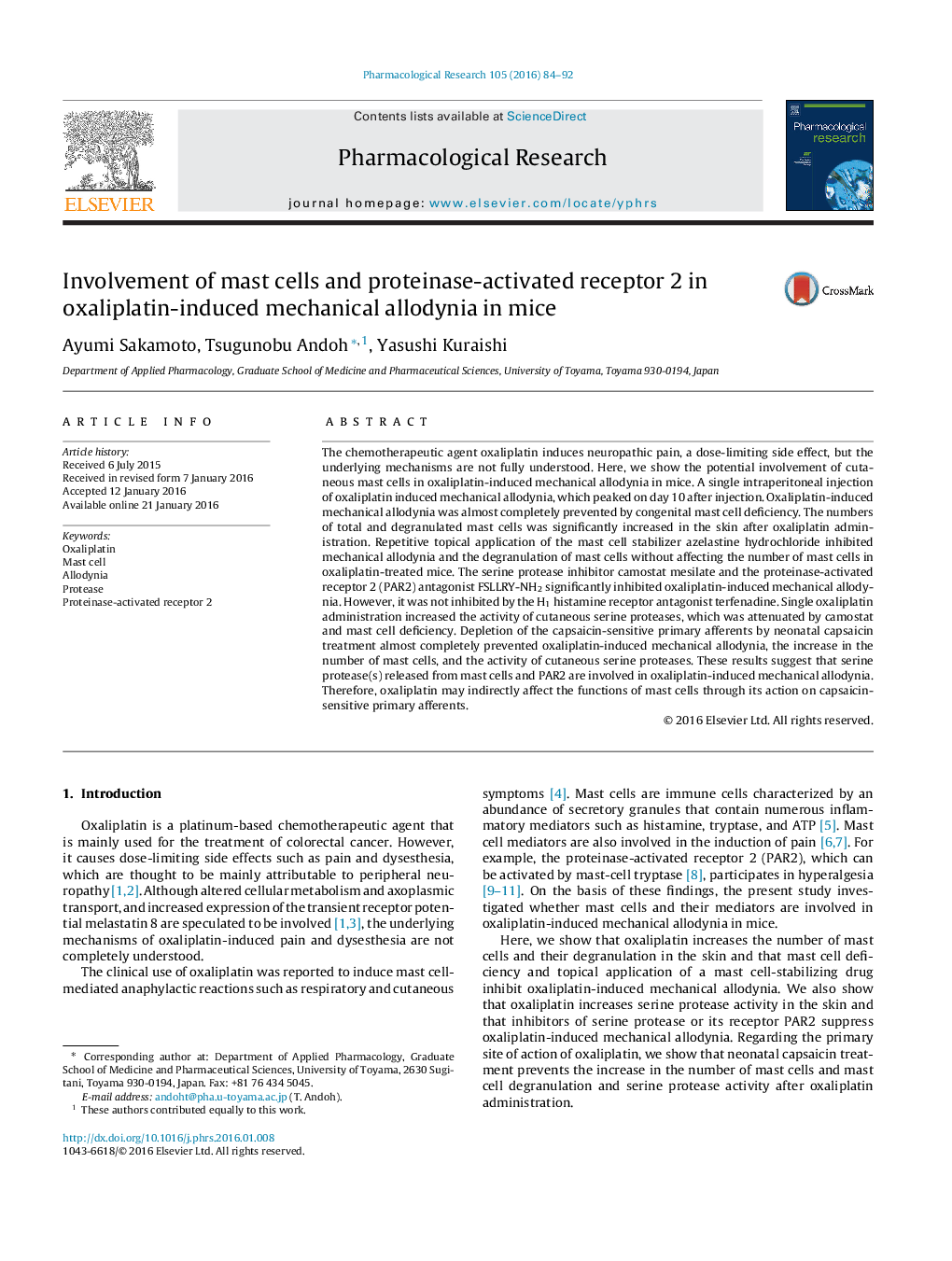| کد مقاله | کد نشریه | سال انتشار | مقاله انگلیسی | نسخه تمام متن |
|---|---|---|---|---|
| 2562047 | 1560835 | 2016 | 9 صفحه PDF | دانلود رایگان |
The chemotherapeutic agent oxaliplatin induces neuropathic pain, a dose-limiting side effect, but the underlying mechanisms are not fully understood. Here, we show the potential involvement of cutaneous mast cells in oxaliplatin-induced mechanical allodynia in mice. A single intraperitoneal injection of oxaliplatin induced mechanical allodynia, which peaked on day 10 after injection. Oxaliplatin-induced mechanical allodynia was almost completely prevented by congenital mast cell deficiency. The numbers of total and degranulated mast cells was significantly increased in the skin after oxaliplatin administration. Repetitive topical application of the mast cell stabilizer azelastine hydrochloride inhibited mechanical allodynia and the degranulation of mast cells without affecting the number of mast cells in oxaliplatin-treated mice. The serine protease inhibitor camostat mesilate and the proteinase-activated receptor 2 (PAR2) antagonist FSLLRY-NH2 significantly inhibited oxaliplatin-induced mechanical allodynia. However, it was not inhibited by the H1 histamine receptor antagonist terfenadine. Single oxaliplatin administration increased the activity of cutaneous serine proteases, which was attenuated by camostat and mast cell deficiency. Depletion of the capsaicin-sensitive primary afferents by neonatal capsaicin treatment almost completely prevented oxaliplatin-induced mechanical allodynia, the increase in the number of mast cells, and the activity of cutaneous serine proteases. These results suggest that serine protease(s) released from mast cells and PAR2 are involved in oxaliplatin-induced mechanical allodynia. Therefore, oxaliplatin may indirectly affect the functions of mast cells through its action on capsaicin-sensitive primary afferents.
The hypothesis of the mechanism of oxaliplatin-induced mechanical allodynia. Oxaliplatin activates TRPV1-expressing C-fibers to release neuromediators, which degranulates mast cells. Tryptase released from the mast cell sensitizes the A-fibers through the activation of PAR2 and induces punctate mechanical allodynia.Figure optionsDownload high-quality image (188 K)Download as PowerPoint slide
Journal: Pharmacological Research - Volume 105, March 2016, Pages 84–92
